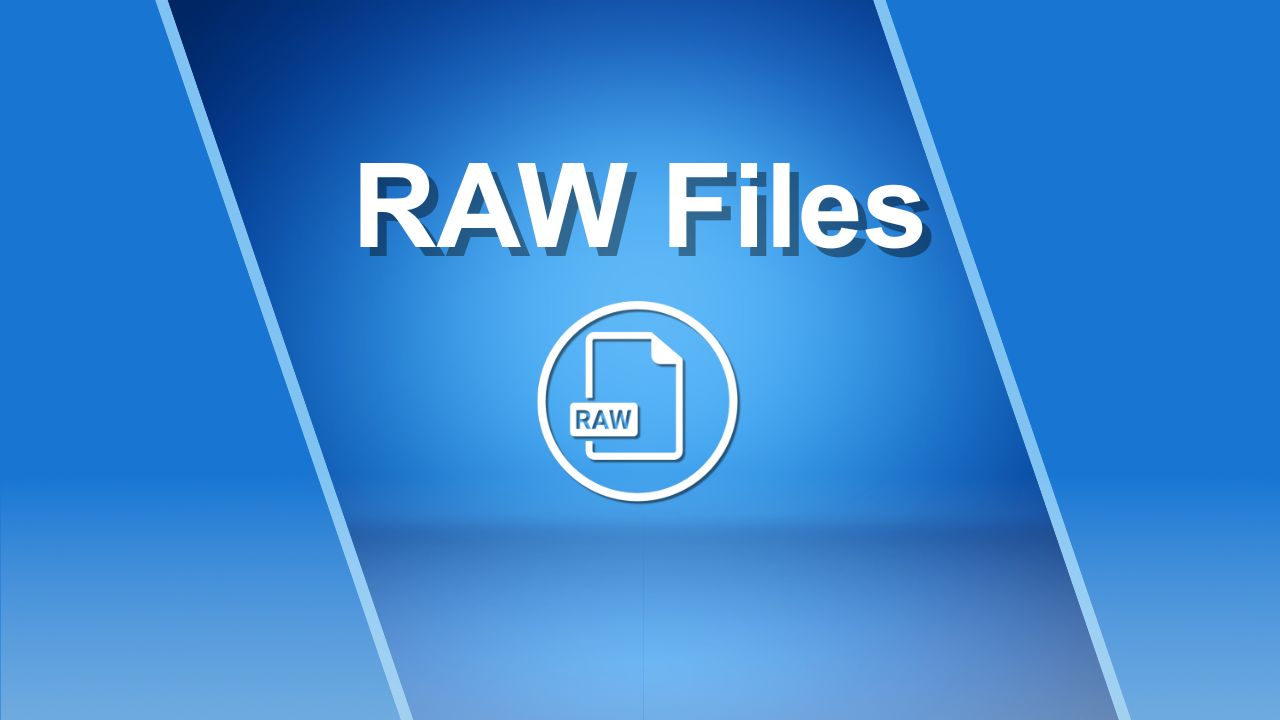
If you've ever wondered what a RAW file really is and why photographers keep recommending it, you're not alone. Many explanations online simply show a side-by-side comparison with JPEGs and say "the RAW looks better." But the truth behind RAW files is much more technical—and much more interesting. In this article, we'll break down the technical side of RAW files in simple terms: how they work, why they contain more data than JPEGs, and how that affects your editing power.
What Is a RAW File?
A RAW file is an uncompressed, unprocessed image straight from your camera's sensor. Unlike JPEGs, which your camera processes and compresses automatically, RAW files preserve all the data captured by the sensor.
This means every color, tone, and shadow is kept intact—giving you complete freedom to adjust exposure, contrast, and color later without losing quality.
Think of RAW as the digital version of a film negative: it's not ready to share yet, but it contains everything you need to create the perfect photo.
Understanding Bit Depth
Before we talk about how much better RAW files are, we need to understand bit depth.
Bit depth refers to how many colors an image can store. The higher the bit depth, the more subtle the color transitions and the greater the editing flexibility.
- JPEG files use 8 bits per color channel, meaning they can store 256 shades of red, green, and blue each (2⁸ = 256).
- RAW files, on the other hand, usually have 14 bits per channel, which equals about 16,000 possible shades per color (2¹⁴ = 16,384).
That's a huge difference. Every extra bit doubles the amount of color information. So, while a JPEG may look fine at first glance, it simply doesn't have the same depth or range of tones as a RAW image.
Why Bit Depth Matters in Real Photos?
To understand how this plays out in real life, let's look at an underexposed image.
A JPEG contains only 256 shades per channel. If most of the image's data is in the darkest 5% of the color spectrum, that's only about 12 shades to represent the entire dark area. When you brighten the image in editing software, those 12 shades are stretched apart, creating banding, color artifacts, and visible noise.
A RAW file, however, contains around 800 shades in that same dark area—because 5% of 16,000 is 800. When you increase the exposure, there's enough data to fill in smooth, realistic transitions without introducing artifacts.
This is why you can recover detail from shadows or highlights in a RAW photo that would be completely lost in a JPEG.
RAW vs. JPEG: The Key Differences
| Feature | RAW File | JPEG File |
|---|---|---|
| Bit Depth | 12–14 bits per channel (~16,000 shades) | 8 bits per channel (256 shades) |
| Compression | Lossless | Lossy |
| File Size | Large | Small |
| Editing Flexibility | Very High | Limited |
| Color Accuracy | Extremely detailed | Reduced after compression |
| Processing | Requires post-editing | Ready to share |
In short: JPEGs are convenient, but RAWs are powerful.
Why You Should Shoot in RAW?
Shooting in RAW gives you a safety net for every photo you take. Even if your exposure or white balance is off, you can fix it later without degrading image quality. Here's why RAW wins every time:
- Better dynamic range: Recover highlights and shadows easily.
- Accurate color correction: Adjust white balance and tones without color shifts.
- Higher quality exports: You can create perfect JPEGs after editing, using all the sensor data.
- Future-proof editing: As editing software improves, your RAW files can be reprocessed with better results.
When JPEG Still Makes Sense?
While RAW is superior for quality, JPEGs still have their place. They're great when:
- You need quick, ready-to-share images.
- Storage space is limited.
- You're shooting casual photos or events with fast delivery needs.
For professional work or creative projects, though, RAW is the clear winner.
In Conclusion
RAW files aren't just "higher quality images"—they're digital containers of potential. Thanks to their 14-bit depth and uncompressed nature, they preserve every detail your camera sensor captures.
JPEGs may be convenient, but once you understand the science behind RAW files, it's easy to see why photographers rely on them. Whether shooting portraits, landscapes, or low-light scenes, RAW gives you the freedom to bring out the best in every shot—no matter what happens in-camera.

